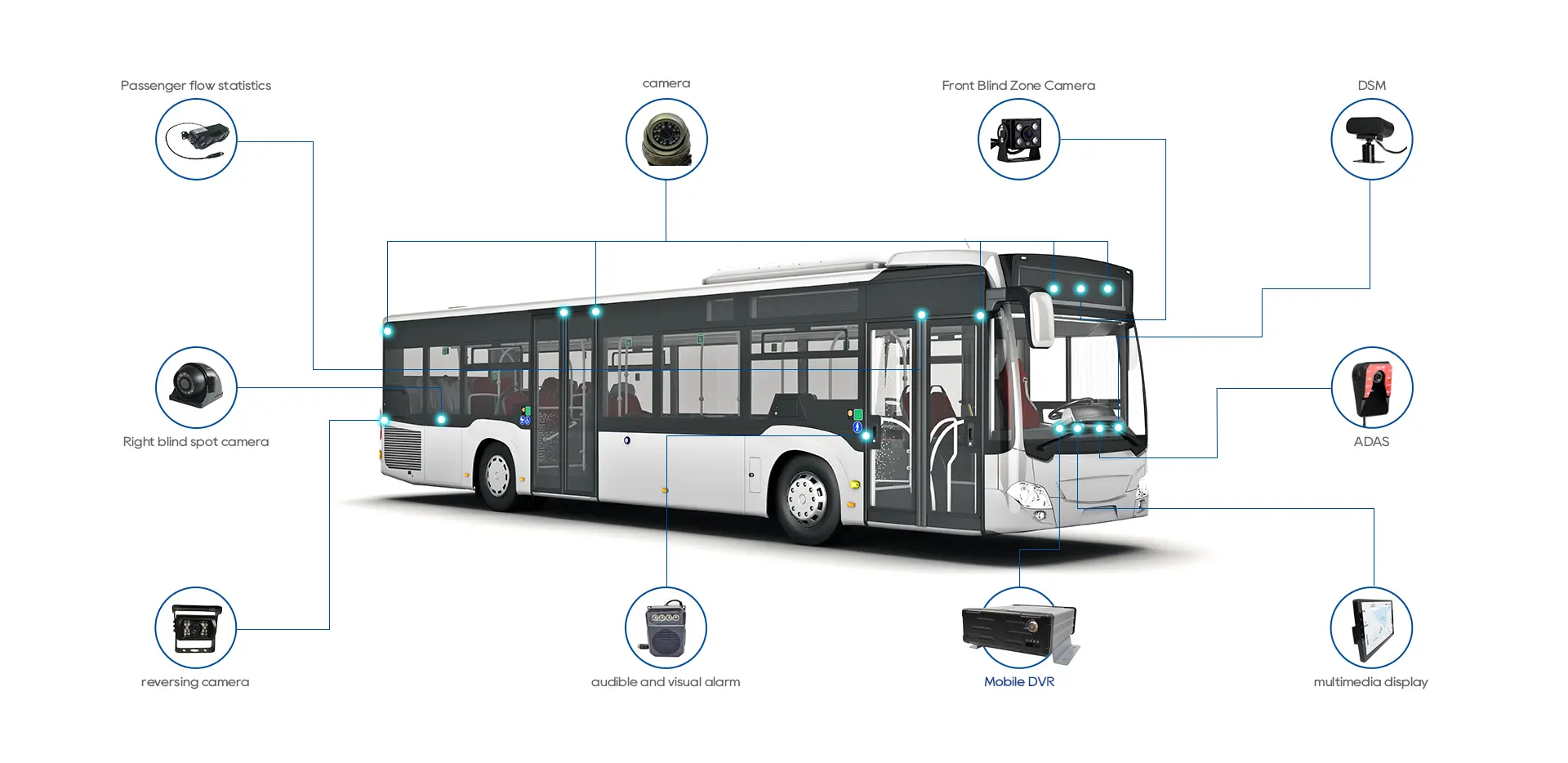Challenges in Bus Management
Real-time GPS positioning and trajectory monitoring, operation time and driving monitoring, setting and adjustment of driving routes, fences, etc.
Real-time video monitoring of the situation inside the carriage, video storage, and playback.
Video surveillance of entry and exit doors, passenger flow statistics.
When a bus arrives at a stop to pick up or drop off passengers, automatic/manual stop notification is required.
Site information display; bus on-board screen display of service information and arrival information.
Monitoring the driver's driving status and behavior, especially preventing driver fatigue driving, cellphone use, and other dangerous hazards; driving ADAS auxiliary monitoring; blind spot monitoring and alarms during vehicle startup, turning, reversing, and other operations.
Emergency alarm, voice intercom, instruction issuance, event capture, etc.
It can be expanded to connect with roadside bus electronic stop signs, efficient docking advertising push, etc.
Bus tracking management system
The Bus tracking management system supports video monitoring, real-time video transmission, VOIP voice intercom, secure storage of data on SD cards or hard drives, driver identification, route monitoring, segmented speed limits, overspeed reminders, fatigue driving alerts, nighttime driving restrictions (alarms during 2 AM to 5 AM), nighttime speed restrictions (80% of daytime speed), voice broadcasting support, in-vehicle hands-free telephone, remote monitoring, vehicle condition analysis, driver behavior analysis, driver distraction detection (alarm for distractions/smoking/talking on the phone), advanced driver assistance system(ADAS) alerts, etc.
